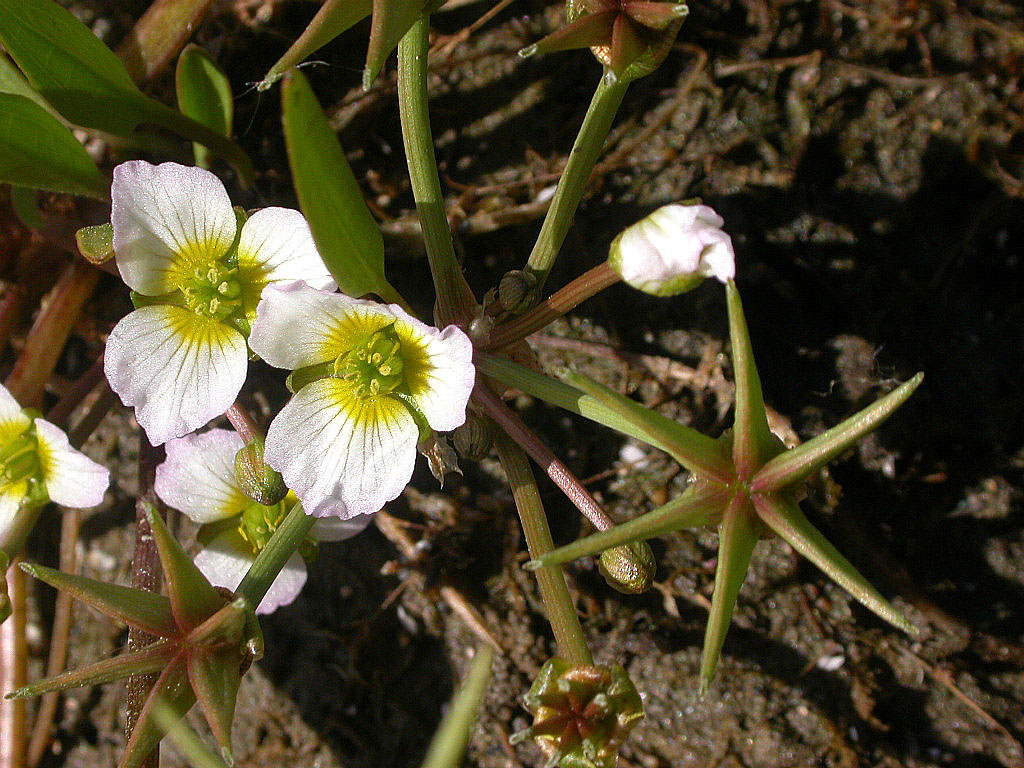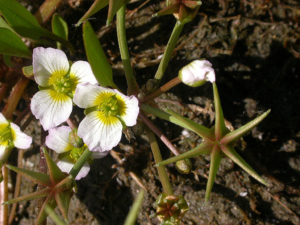 The importance of plants for conservation was recognised very early at the Tour du Valat, regarding both biodiversity (Bigot 1955) and function (Bassett, 1978). In the past, the functional aspect often dominated in multidisciplinary approaches that targeted animal species.
The importance of plants for conservation was recognised very early at the Tour du Valat, regarding both biodiversity (Bigot 1955) and function (Bassett, 1978). In the past, the functional aspect often dominated in multidisciplinary approaches that targeted animal species.
The work on aquatic plants started during the 1980s, in an approach that was both floristic and functional. Aquatic plant communities play an important role for wintering water birds, which are a major asset to the Camargue in terms of both biodiversity and economic value. In addition, these first studies quickly revealed both the richness of the aquatic vegetation in the Camargue and the consequences of active water management for that biodiversity. The climatic conditions, low depths and salinity gradients characteristic of Mediterranean deltas lead to a wide range of marshes and temporary pools with considerable spatial and temporal variations in salinity levels. These wetlands are occupied by a wide variety of strictly aquatic or amphibious plants, including many typically Mediterranean species, adapted to very unstable salinity and flooding conditions.
Some are mainly to be found in either autumn or spring, during the flooded phase, for example numerous Characeae, 3 species of Zannichellia, together with Ranunculus, Callitriche and Ruppia species. Others are present only in spring, during the transition between the aquatic and dry phases, with a large number of species some of which are protected at national or regional level (for example Damasonium polyspermum, Cressa cretica or Lythrum tribractatum). These species are consumed by wintering ducks but, under natural conditions, their biomass is relatively low and highly variable from year to year.
The desire to increase capacity to support wintering ducks, together with the large quantities of water introduced into the Camargue for rice-growing, led to increased flooding depth and duration in order to obtain higher biomasses of water plants. This management system led to the replacement of the rich communities of Mediterranean aquatic and amphibious plants by frequently mono-species and cosmopolitan populations of undemanding species such as sago pondweed (Potamogeton pectinatus) or Eurasian water-milfoil (Myriophyllum spicatum). This widespread impoverishment has diminished in protected areas with a return to management methods closer to natural conditions. However, in hunting marshes the trend continues.
The study of the vegetation of temporary pools quickly spread from the Camargue, firstly to the rest of southern France then throughout the Mediterranean basin, providing new knowledge about the status and dynamics of these habitats. These studies resulted in the production of a multidisciplinary management guide (Grillas et al.) (3).
At present, the work on wetland flora and vegetation is oriented in five directions:
- The study of Mediterranean temporary pools, including their interannual dynamics and conservation, continues above all in Morocco through a long-standing partnership with Prof. Laila Rhazi and her team in Casablanca.
- We collaborate with the IUCN to assess the conservation status of aquatic plants in the Mediterranean basin (red list).
- Experimental work continues on the saline grasslands of the Camargue (habitats of European community interest) and the role in their dynamics played by wildlife and domestic animals.
- The restoration of wetlands is becoming a major component of our activities, enabling us to apply our knowledge to conservation (and test its limits!) in an encouraging perspective of an improving situation.
- Floristic and plant community (habitat) biodiversity inventories are also an important of our work, particularly in the framework of management plans.
The prospects are exciting, with this broad range of work and the perspective of seeing our results implemented to improve the conservation status of wetlands.
References:
(1) Mittermeier et al. 2004. Hotspots revisited. Cemex Mexico. 392p
(2) Doga Dernegi et al. 2010. Mediterranean Basin Biodiversity Hotspot. Critical Ecosystem Partnership Fund, Arlington (USA). 251p
(3) Grillas P., Gauthier P., Yavercovski N., et Perennou C. 2004. Les mares temporaires méditerranéennes. 2 volumes.
Others:
· Mouronval J-B, Baudouin S. Plantes aquatiques de Camargue et de Crau – ONCFS – 122p.

 T
T